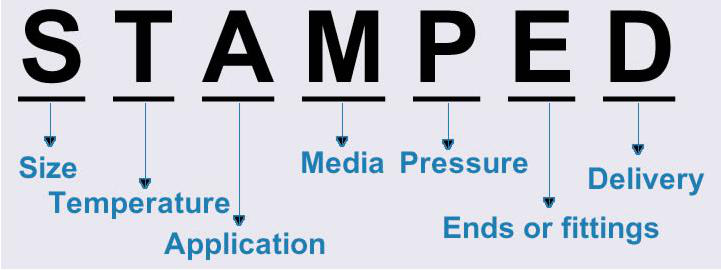Basic Hose Construction
Hydraulic hoses are designed to carry hydraulic fluids often with high pressure and high temperatures. They are very important elements for hydraulic systems. Not all hydraulic hoses are suitable for all purposes. There is a 7 alphabet principles to resolve your problems of hydraulic hose problems.

1. Hose size
Choosing the wrong size will cause pressure loss and create excessive heat. Dash number refers to sixteenths of an inch standing for the size and coupling and makes the measurement easy to remember.
Although Hose O.D. will not affect the pressure and heat, it is still an important factor when hose routing is tight.
2. Temperature
Fluid temperature and ambient temperature should be considered. Fluid temperatures, whether maximum or minimum, should be kept in a reasonable range. When the fluid is far higher or lower than specified operating temperature, the tube will degrade materially.
Ambient temperature also concerns about the life of the hose, especially the cover and reinforcement. Once the cover is not workable, reinforcement is exposed to the environments, the life of the hose may be shortened.
3. Application
Understanding the applications is very helpful to the hydraulic hose selection. You can ask yourself or your customer some questions such as where the hose is used to.
4. Media to be carried
Medias include oils, hydraulic fluids and special chemicals that come in direct contact with the tube. You must be sure that the tube can be compatible with the fluid, or the hose will fail in a short time and cause unnecessary accidents.
5. Pressure
Be sure the operating pressure never surpasses the hose’s maximum. Working the hose at its maximum pressure for an extended period of time is harmful to the hose.
6. Ends of coupling
Couplings of hydraulic hoses are not interchangeable. Improper coupling also shortens the life. Consult the manufacturer for suitable coupling.
7. Delivery
Once the bore size is determined, consult the chart to determine fluid rate and velocity.



